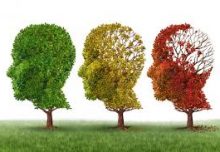
You have heard from me before about how there is a new Alzheimer’s Disease diagnosis in America every 67 seconds…about one a minute every day and every night! According to medical professionals it is becoming even more prevalent worldwide. By the year 2050, this rate is expected to double to one new case every 33 seconds. It is ranked as number one in prevalence of all neurodegenerative conditions affecting 5-6 million Americans and as many as 47 million people across the globe. Translated, that means about one in eight individuals over age 65 will be affected by Alzheimer’s and that climbs to almost half of those 85 years and older.
It has been studied for more than 100 years with little headway on what causes Alzheimer’s Disease, let alone how to treat it. I am going to talk more about treatment, and there are some avenues that show promise, in a second installment to this two part series on Alzheimer’s. In this part, let’s go over how Alzheimer’s is diagnosed accurately today than ever before.
Not that long ago, Alzheimer’s could only be diagnosed after a patient had died when they could actually investigate how much beta amyloid plaque had accumulated in their brain. That is so yesterday. There are now three ways to arrive at an Alzheimer’s diagnosis in a patient. The first starts with a genetic marker that predisposes an individual to developing Alzheimer’s. It’s called the APOE4 gene, and about one in seven to one in ten people carry this gene. Those who have one copy of this gene are about two to three times as likely to develop the dementia as those who do not have the gene. And if a person has two copies of this gene the likelihood shoots up to 12 times that of a person with no copies of the gene. Should everyone get the genetic test? Well, talk to your doctor, but as medical professionals have consistently shown early diagnosis can be the first step toward more effective treatment of any condition.
A second step toward diagnosis will be what is termed a neuropsychological test which assesses a person’s cognitive function. It should be conducted by a neurologist, not just a primary care physician. Combined with the genetic test, it can help to pinpoint Alzheimer’s Disease, but not without the third test. Brain-imaging can not only help to look for the signature of Alzheimer’s activity the brain, but also rule out other issues like hemorrhage or tumors that may be causing mental difficulties. It will also more concretely assess the extent of any Alzheimer’s spread in the brain. This latter testing can be done by a number of technologies like CT or PET scanning, but the most common test is MRI.
Look for Part 2 next week when I review the existing as well as new, promising treatments for this condition.
You all may recall that I have a book that I have co-written on what a caregiver should know about Alzheimer’s…it is noted in the closing paragraph here. If you want to save 20 percent off the Amazon price, please just send me an email and we will send you a copy for $19.97 which includes shipping and handling.
Charlotte Bishop is an Aging Life Care Advisor, Geriatric Care Manager and founder of Creative Care Management, certified professionals who are geriatric advocates, resources, counselors and friends to older adults and their families in metropolitan Chicago. She also is the co-author of How Do I Know You? A Caregiver’s Lifesaver for Dealing with Dementia.






